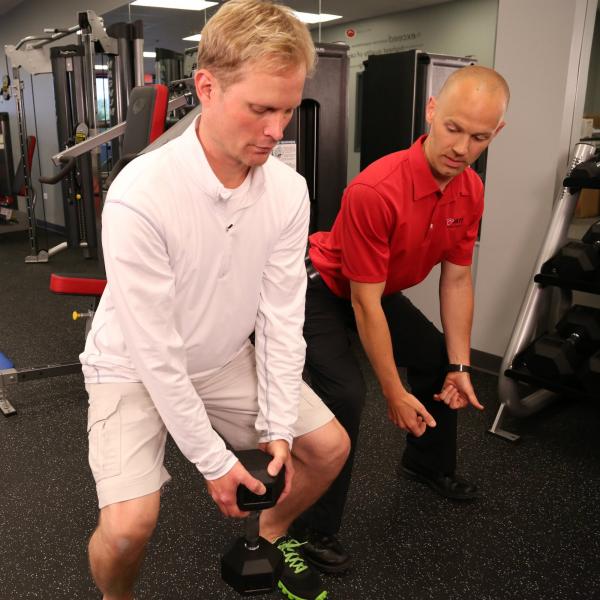
For the past few months, especially as election season heated up, we heard endless talk about unemployment and the importance of getting Americans back to work. All politics aside, we’re always focused on getting Americans back to work here at ATI, whether it’s election season or just another day. This goal to return workers to their jobs is the inspiration and motivation behind our F.I.R.S.T. program.
Gregory Olkowski, the F.I.R.S.T. Program Director at our Middletown, DE, clinic, helps people get back to their jobs every day. After an injured worker goes through acute therapy for an injury, he or she will enter this full body strengthening program to help prepare them for the rigors of the workplace.
“F.I.R.S.T. becomes their job,” Greg says. “They come in five hours a day, five days a week for four to six weeks depending on their job demands. We focus on rehabilitating their whole body, not just their injury, to help decrease the chances of re-injury and help them return to work as strong, if not stronger, than they were before.”
A day in the F.I.R.S.T. program
Greg says that he always starts a session with about thirty minutes of cardio and stretching to get the body moving. The rest of the session is devoted to general body strengthening and, later, job-specific tasks, followed by additional cardio and stretching.
“It’s important to strengthen the whole body before letting someone go back to work,” Greg says. “The worker may have injured one part of his body, but if it put him out of work for a few weeks, his whole body is impacted.”
In this work conditioning program, Greg will help workers develop habits that can help them lead a safer, more sustainable lifestyle.
“We focus a lot on proper lifting mechanics and increasing flexibility for injury prevention,” Greg says. “I don’t want to see people back here with another injury. I’m trying to help them so that they can get their life back.”
Creativity is key
As workers get farther into their program, our team simulates their work environment so that they can practice job-specific tasks.
“We get pretty creative to simulate a worker’s work environment,” says Greg. “If I have an injured electrician, I might ask him to put on his tool belt and uniform and have him tighten some nuts and bolts in a small, very confined area. If I have a custodian, I might have him pull a heavy load up a set of stairs to simulate pulling a floor buffer. The creativity is one of my favorite parts of my job.”
Getting more than just a job back
“Many times, I’ve had patients who were totally unsure about the program or didn’t want to do it altogether,” Greg says. “But, once they give it a chance, they’ll get through the whole program and end up losing weight, lowering their blood pressure, being healthier than they have been in years…and that’s truly rewarding.”
To learn more about our F.I.R.S.T. program, visit our work conditioning page.
